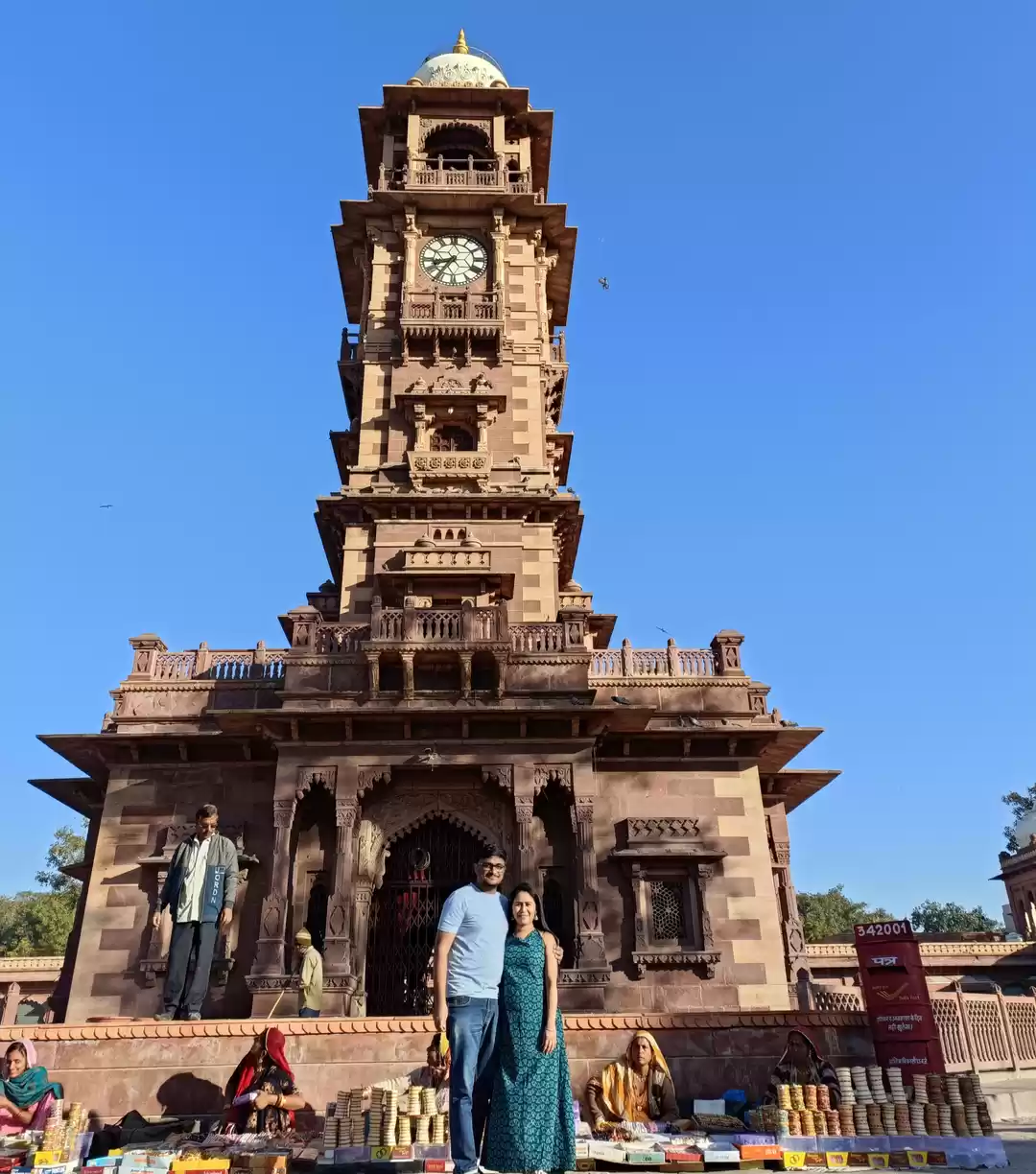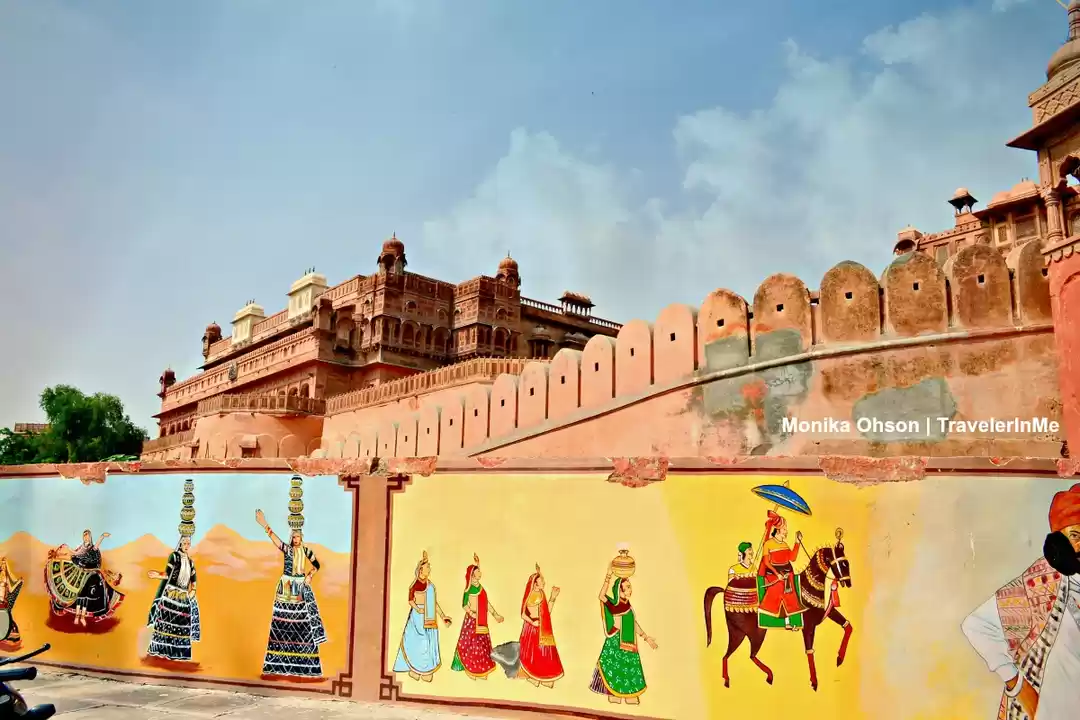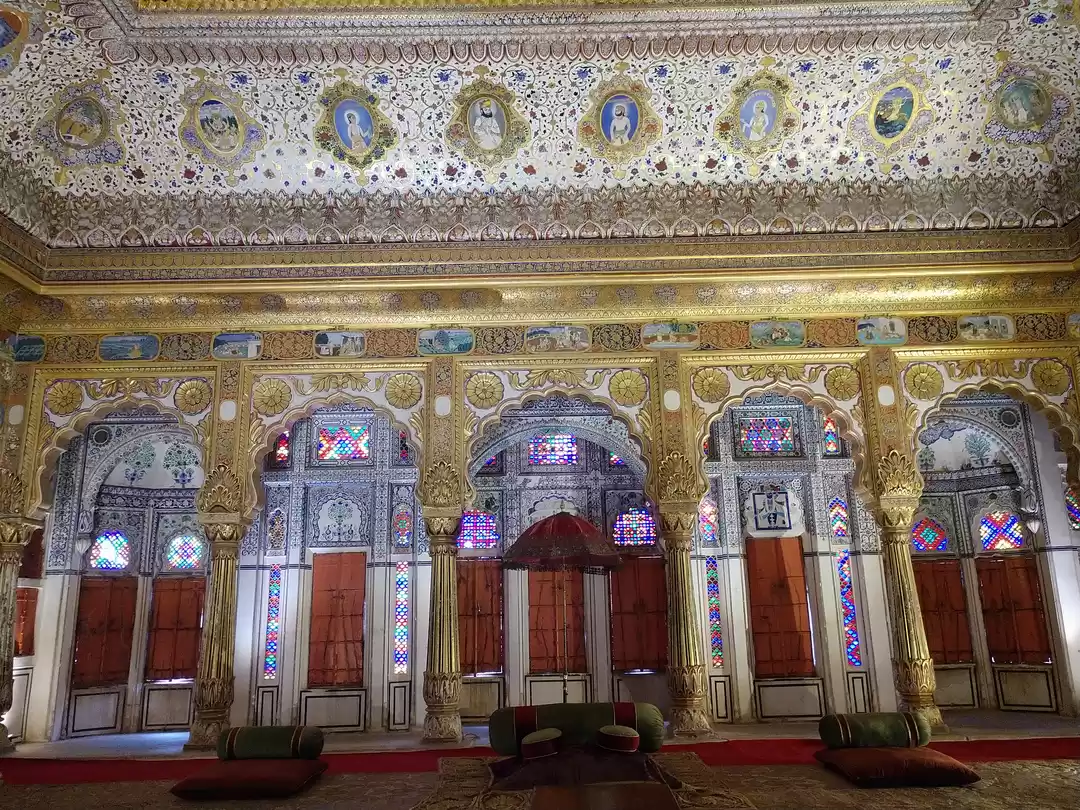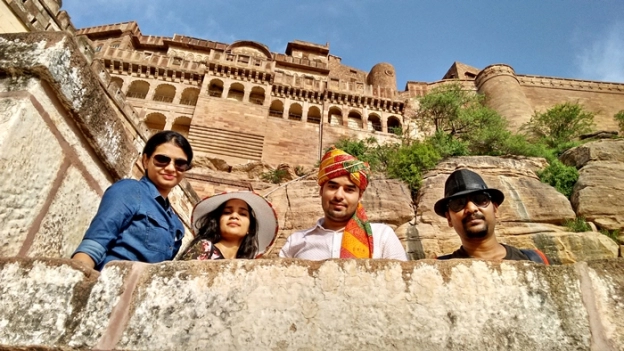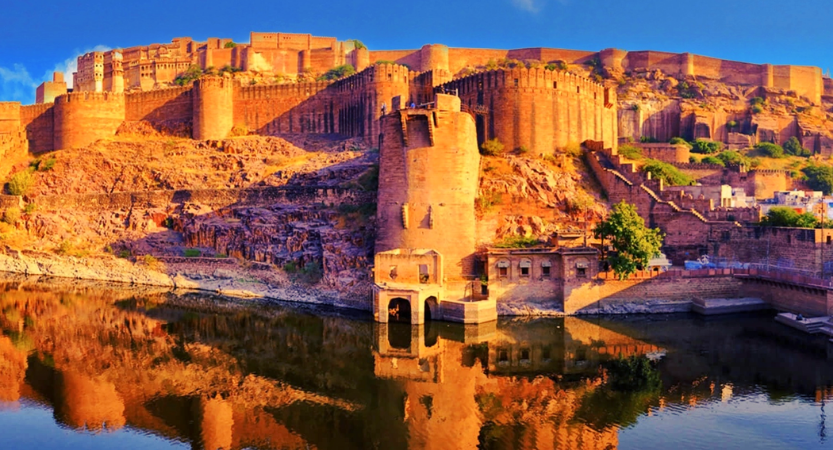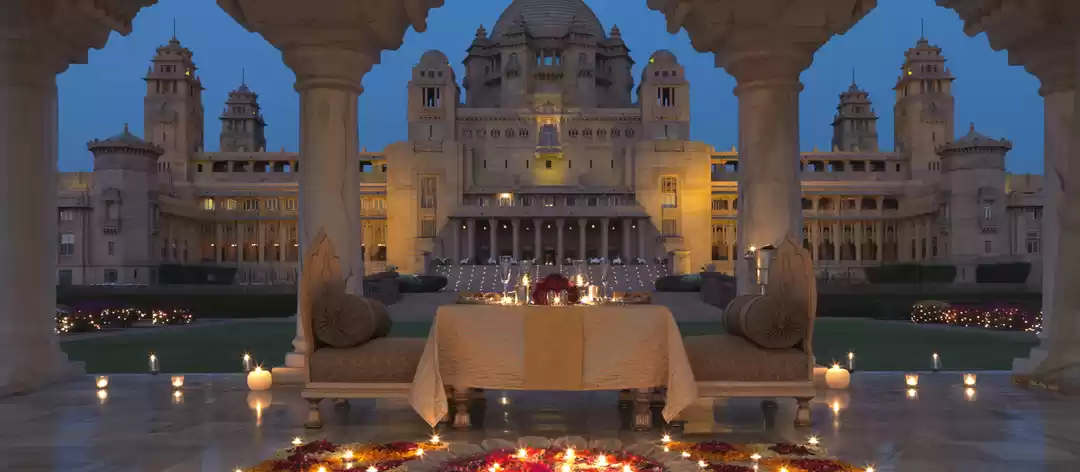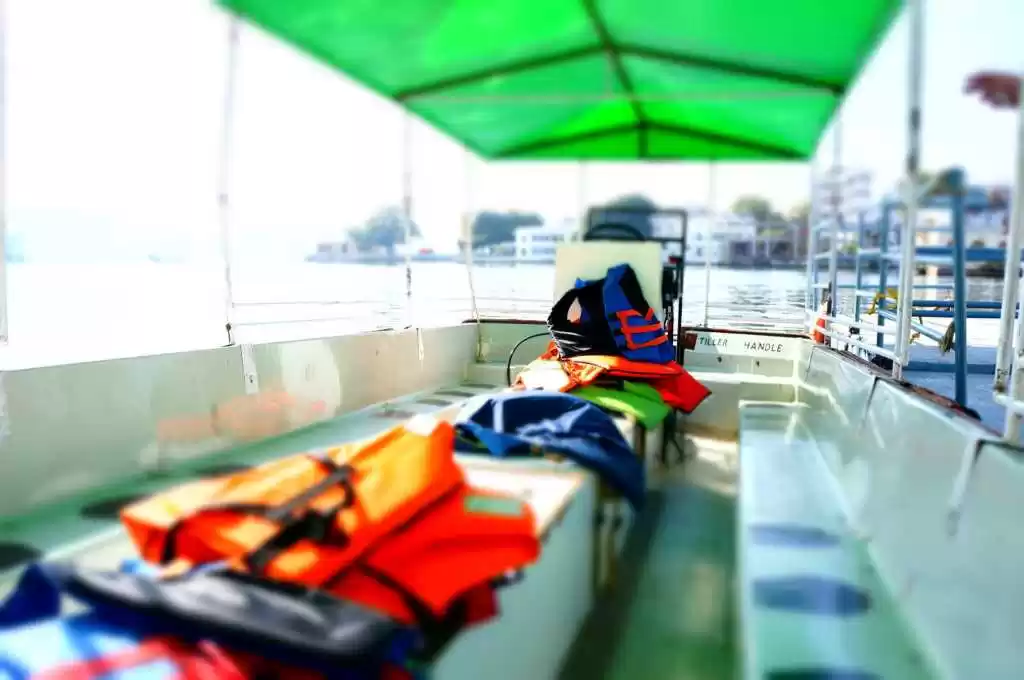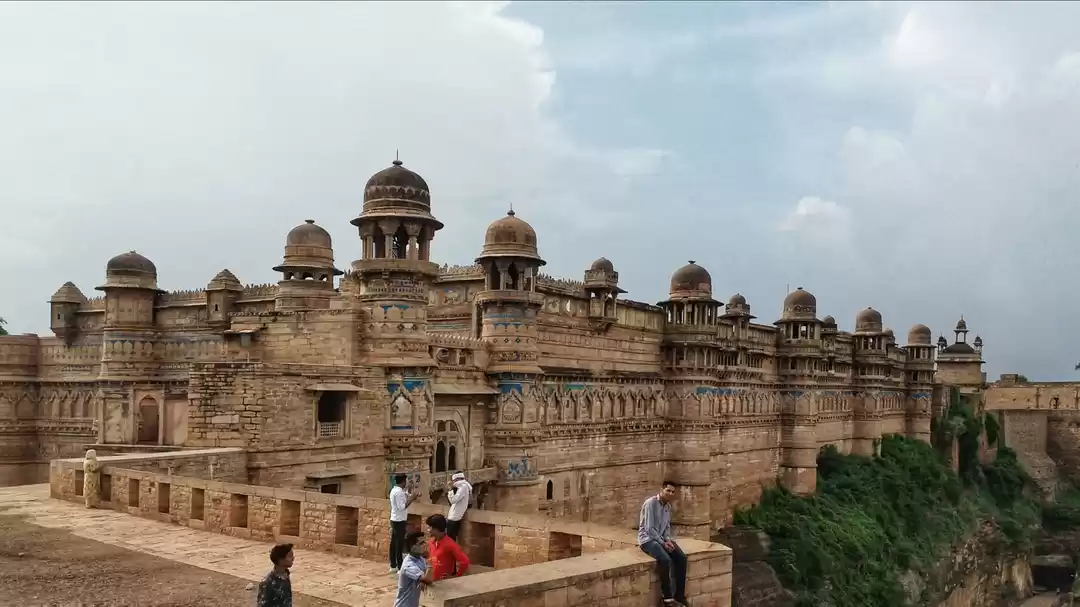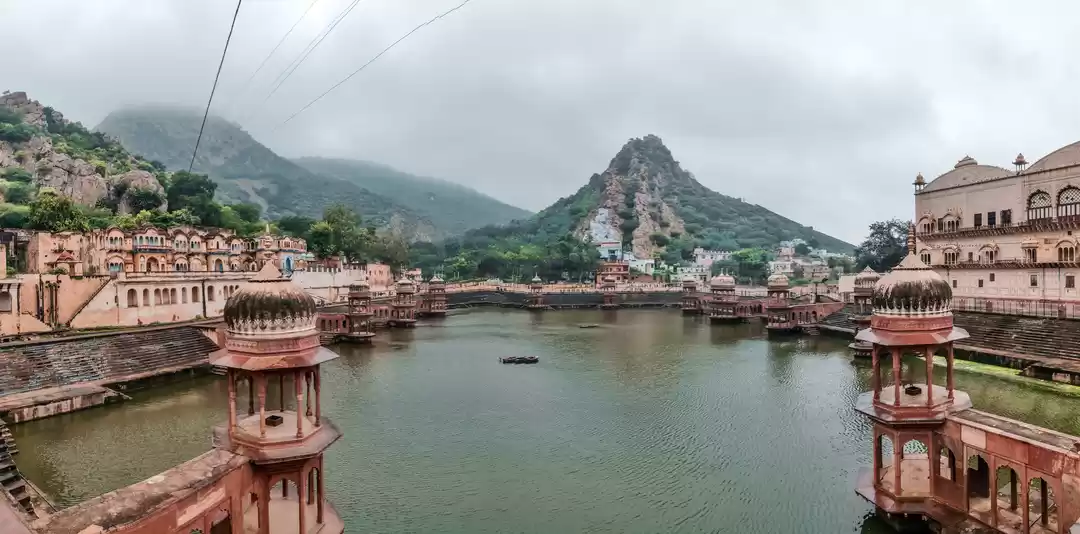This is the 2nd part of the blog dedicated to Mehrangarh Fort and is focussed around the tour to the interior of the fort or the fort museum. The 1st part is based on the tour of the fort complex.
I had visited the fort complex earlier and the following day, I came back to the fort to explore the fort museum. This tour needs an entry ticket and guides are available as well. I opted for an audio guide as it allows you to explore a place at your own pace. The museum by itself is so expansive, it took me almost 3hrs until I finally walked out the fort.
Welcome to the Museum
The Mehrangarh museum has a unique importance as a repository of the artistic and cultural history of Rajasthan. The museum boasts some of the most exemplary collections of Miniature Paintings, Arms & Armours, Textiles, Decorative Arts & Furniture from the 17th, 18th and 19th centuries.
The museum also consists of seven period rooms: Sheesh Mahal, Phool Mahal, Takhat Vilas, Sardar Vilas, Jhanki Mahal, Dipak Mahal, Moti Mahal and six galleries: Howdah Gallery, Palanquin Gallery, Daulat Khana, Painting Gallery, Textile Gallery and Arms Gallery.
Shringar Chowk
As you enter the fort museum, Shringar Chowk is the first courtyard that welcomes you. This is where the most important events in the Fort; the Raj Tilak (enthroning ceremony when new rulers were anointed) took place. The throne is a marble seat which stands on a platform adorned in late-Mughal style.
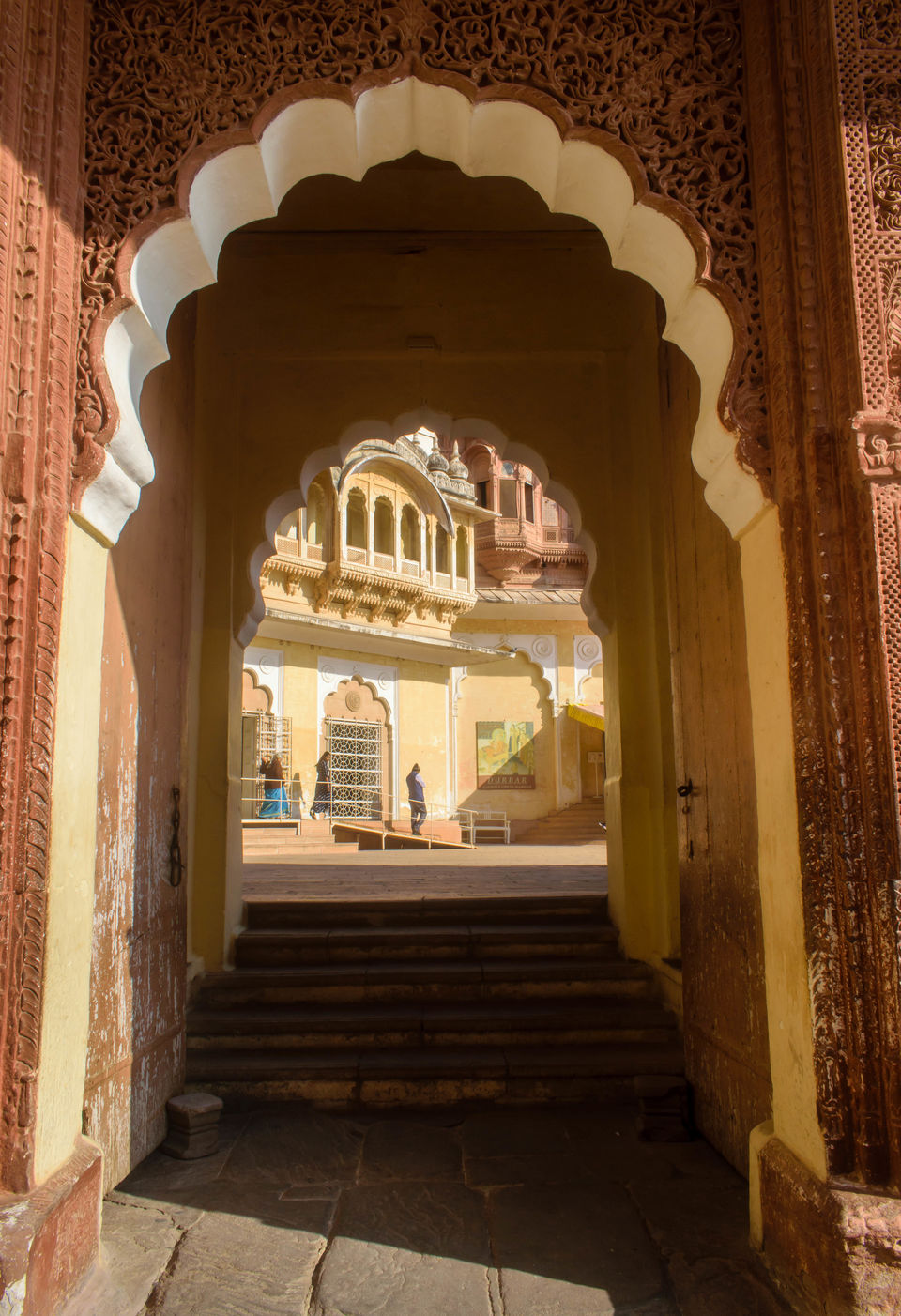
Just beyond the Sringar Chowk, there is an open area that provides some wonderful views of the city and the rest of the fort.
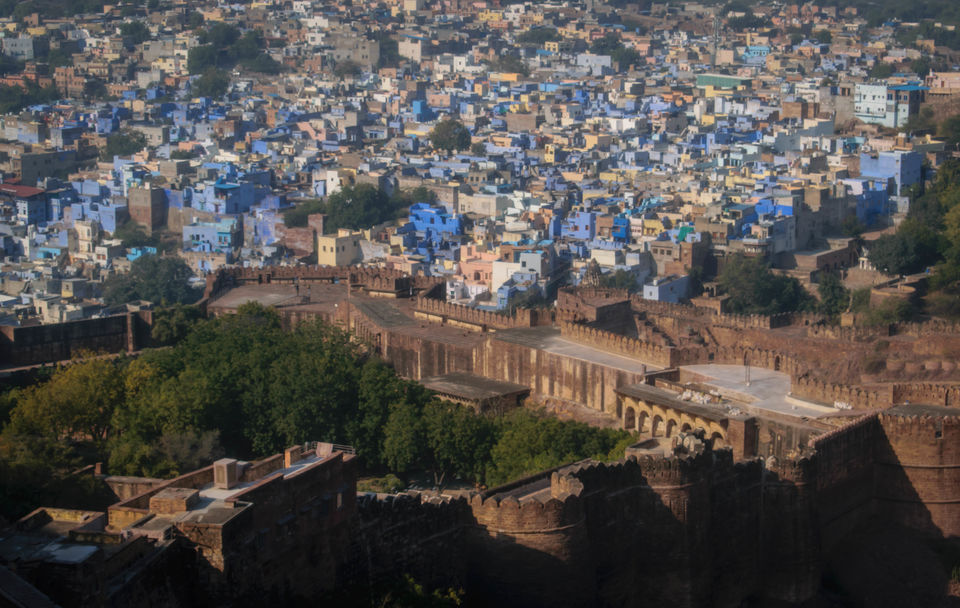
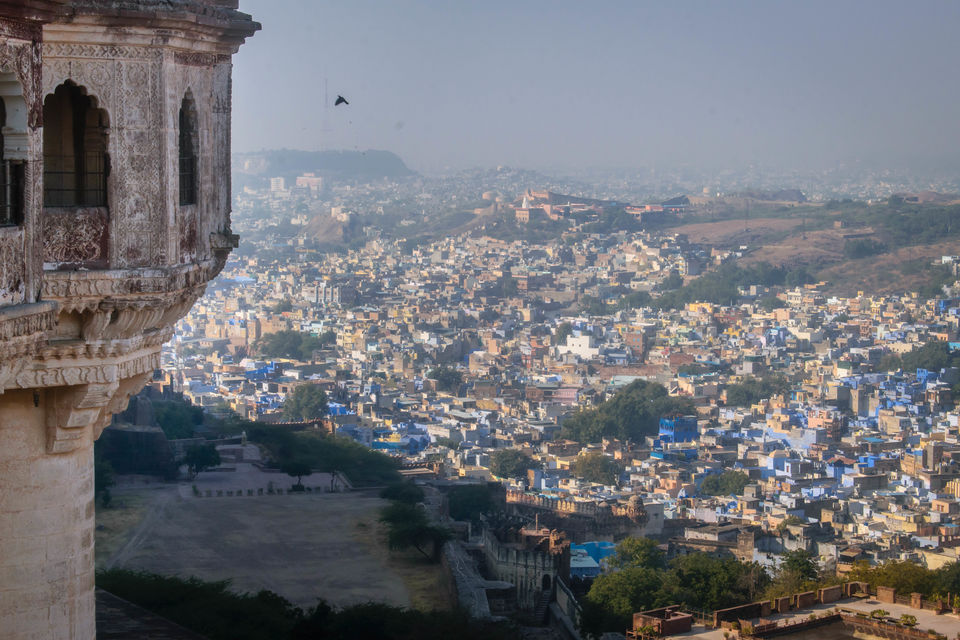
Daulat Khana
From Shringar Chowk, you enter the second courtyard known as Daulat Khana Chowk (Treasury Square). Built by Maharaja Ajit Singh in 1718, Daulat Khana also known as Ajit Vilas is a three storey building with arched openings on all levels. Daulat Khana is flanked by Phool Mahal and Jhanki Mahal on its sides. It is now used for the display of some of the museum’s prize exhibits.
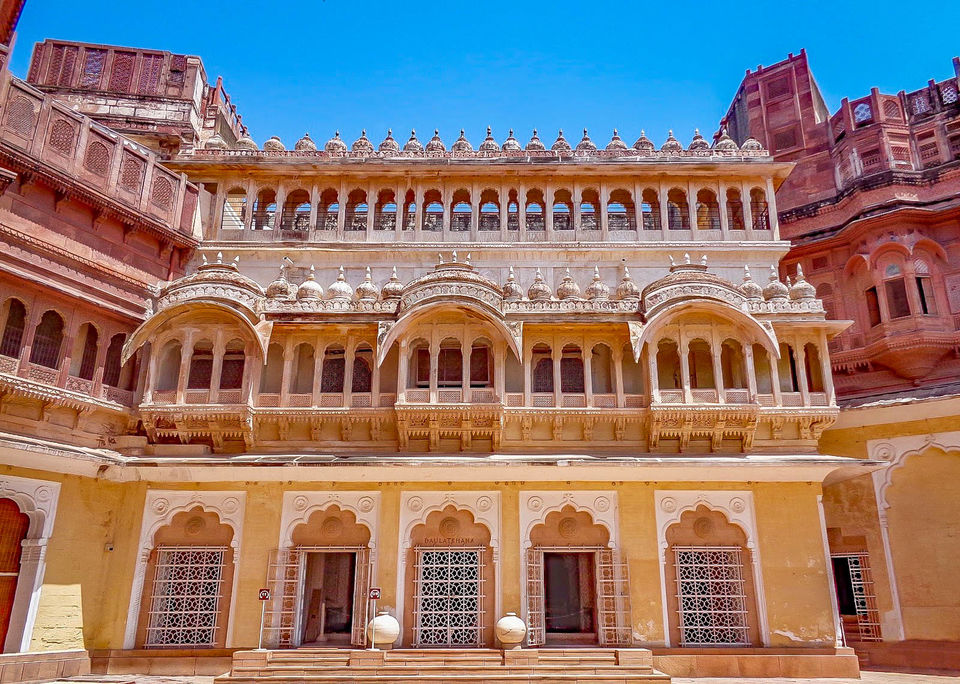
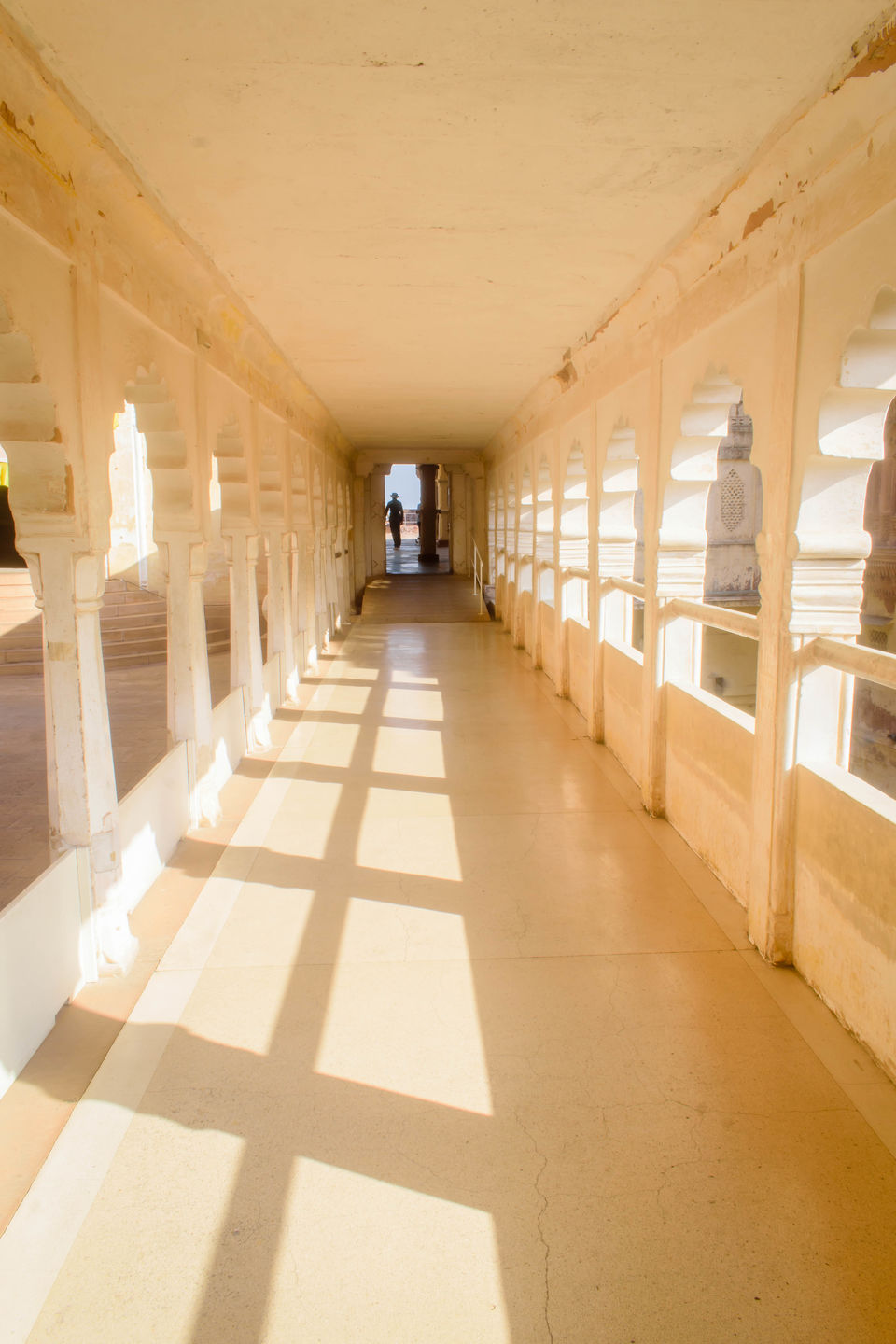
The first room you encounter when you enter Daulat Khana is the Howdah room. The room is an exhibit for howdahs (elephant seats) from the 18th and 19th centuries. Among the exhibits is a unique and priceless howdah, which belonged to the Maharaja Jaswant Singh I and was presented to him by the Mughal Emperor Shahjahan.


Next is the Palki Khana. This gallery displays some of the richest collections of palanquins in Rajasthan. Palanquins were a popular means of travel for the royal and noble ladies until the 19th century. Probably the most exquisite amongst them all is the Mahadol, a golden palanquin that was gifted by the governor of Gujarat in 1730.


In another room is a gallery displaying a large collection of miniature paintings. There are apparently more than 3000 of them dating from the late 16th century to 19th century. The collection mainly belongs to the Marwar School of paintings. Artists trained at the Mughal courts brought sophisticated concepts of portraiture and composition to Jodhpur in the 17th and 18th centuries, which later evolved into a unique Rajasthani style in combination with the distinctive local folk style and bold colours. There are also dozens of paintings depicting the life of Maharaja Man Singh and his nobles and ladies.



There’s also an idol of the goddess Gangaur, one of the incarnations of Parvati. Gangaur is worshiped by married ladies for longevity of their husband’s life.
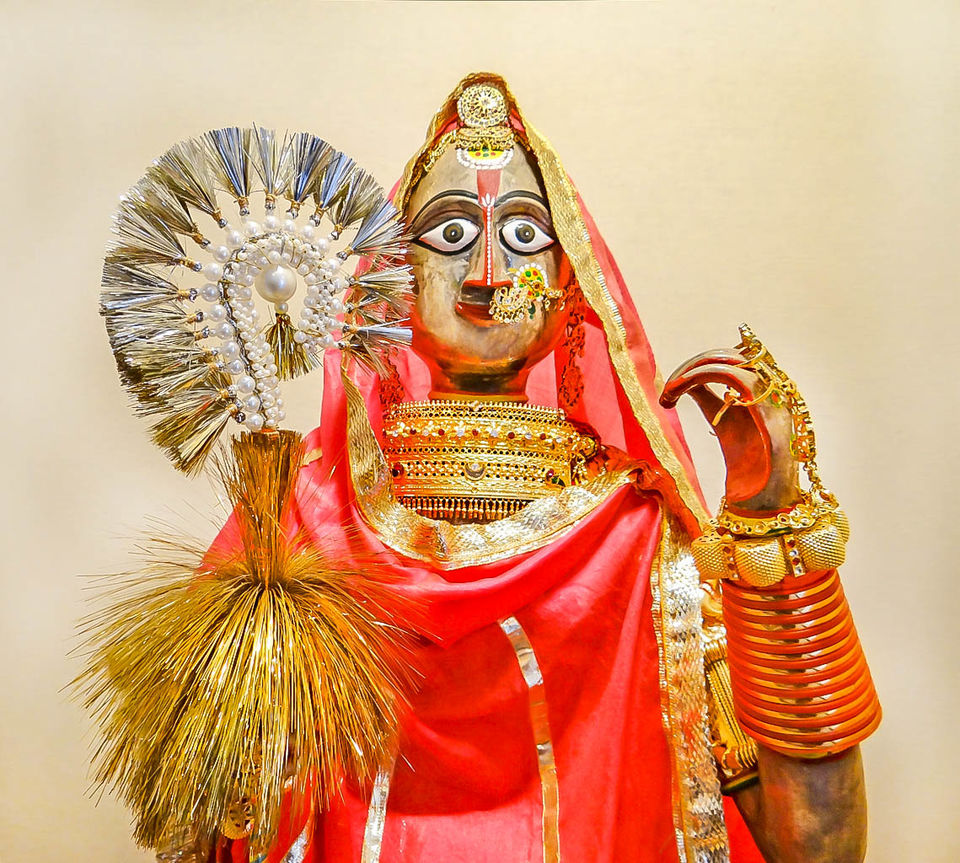
Past this, it’s time to move upstairs.
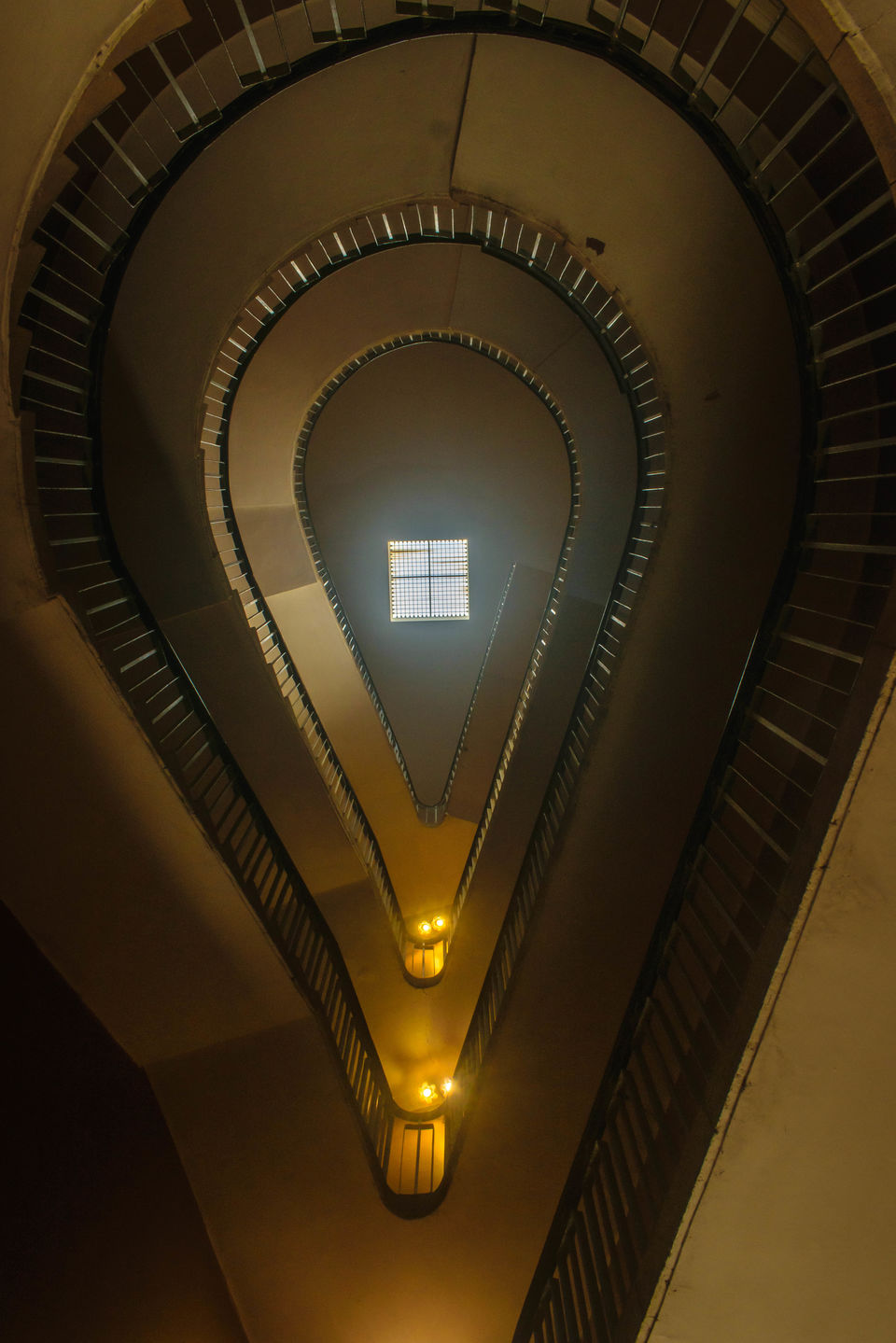
Sheesh Mahal
The Sheesh Mahal (Palace of Mirrors) was once a part of the private apartment of Maharaja Ajit Singh, and is heavily decorated with mirror work.
Under the arches in Sheesh Mahal are painted gesso panels depicting gods and goddesses such as Brahma, Shiv- Parvati and Ganesh on their thrones. There’s Krishna pictured playing the flute and lifting Mount Govardhan while Ram and Sita appear with Hanuman.
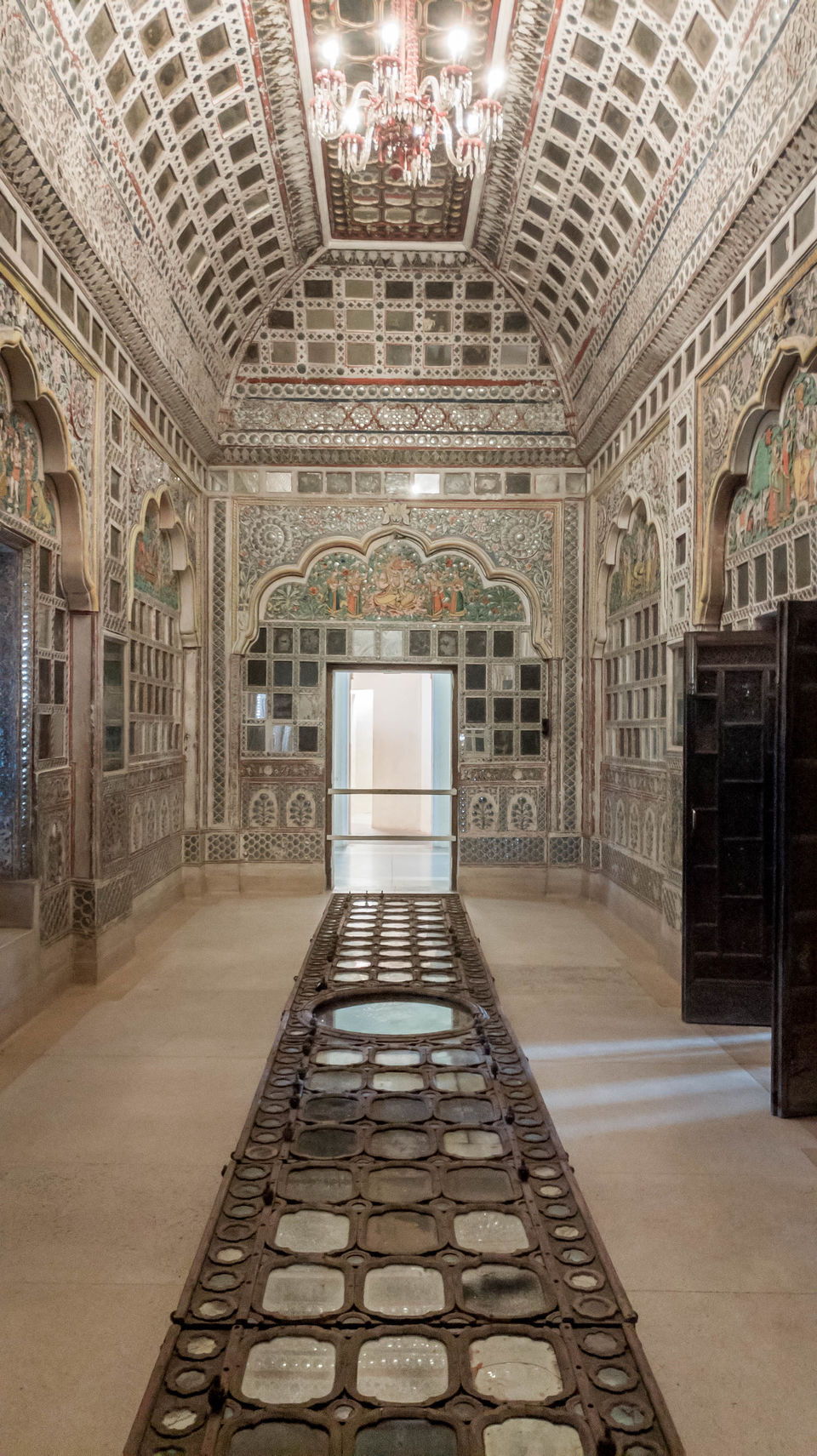
The wooden ceiling and the European glass chandelier suspended on it are later additions from the 19th century. The original 18th century ceiling is displayed on the floor.
Phool Mahal
This magnificently grand and highly ornamented room was constructed by Abhay Singh, son of Ajit Singh, in the mid-18th century as a hall of private audience. The hall served the purpose of a pleasure dome for the female dancers during his reign and was made to look as beautiful as a magnificent flower, which earned it the name Phool mahal. The room is beautifully decorated with its ceiling boasting of rich filigree of gold - plundered from Gujarat after the king's triumph over Sarbuland Khan, a Mughal Governor.
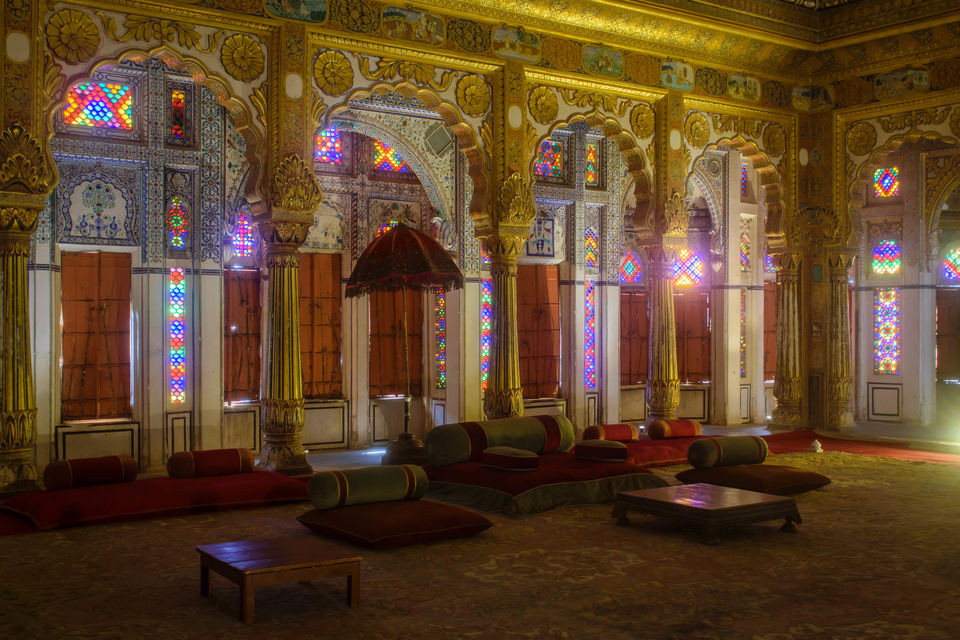
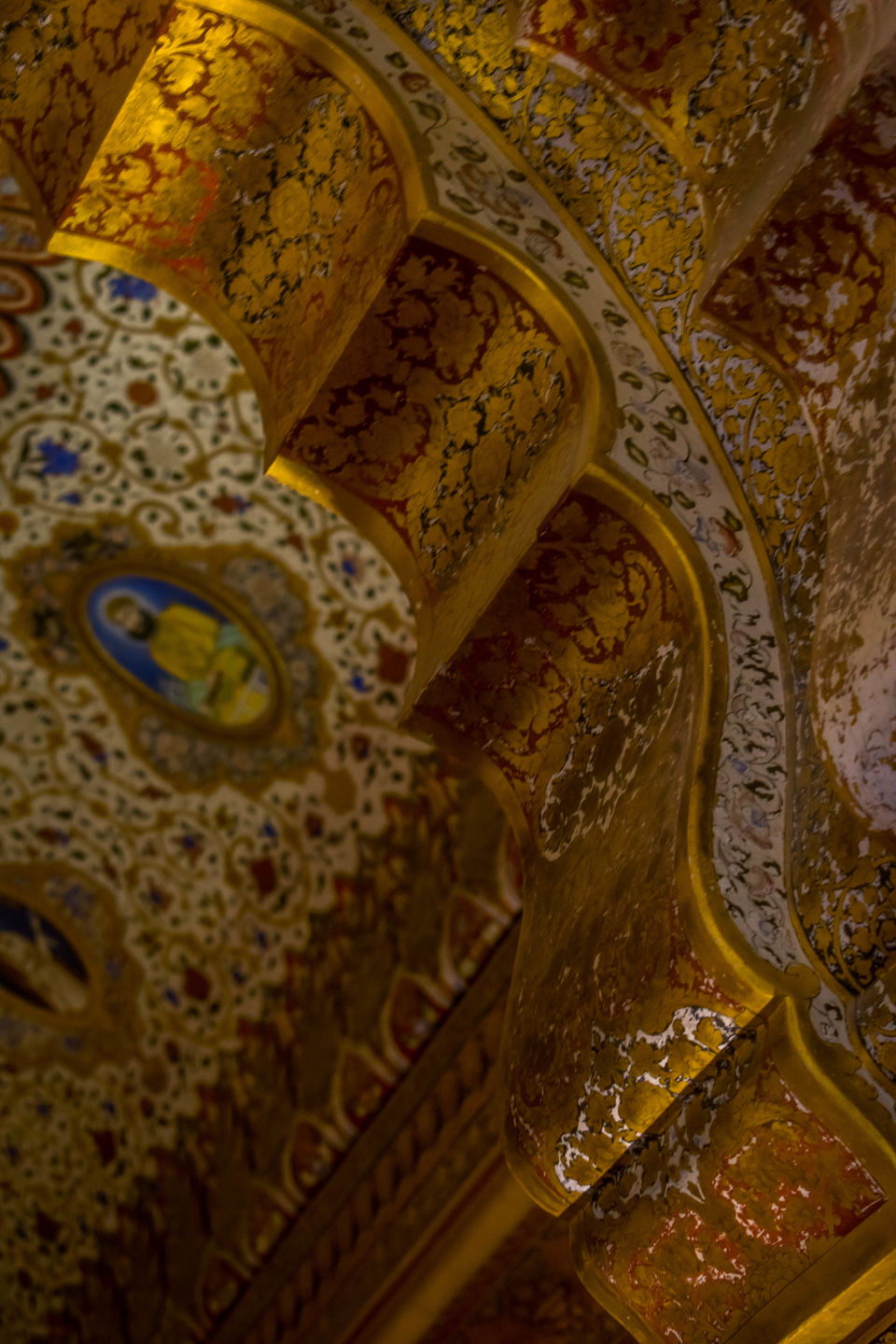
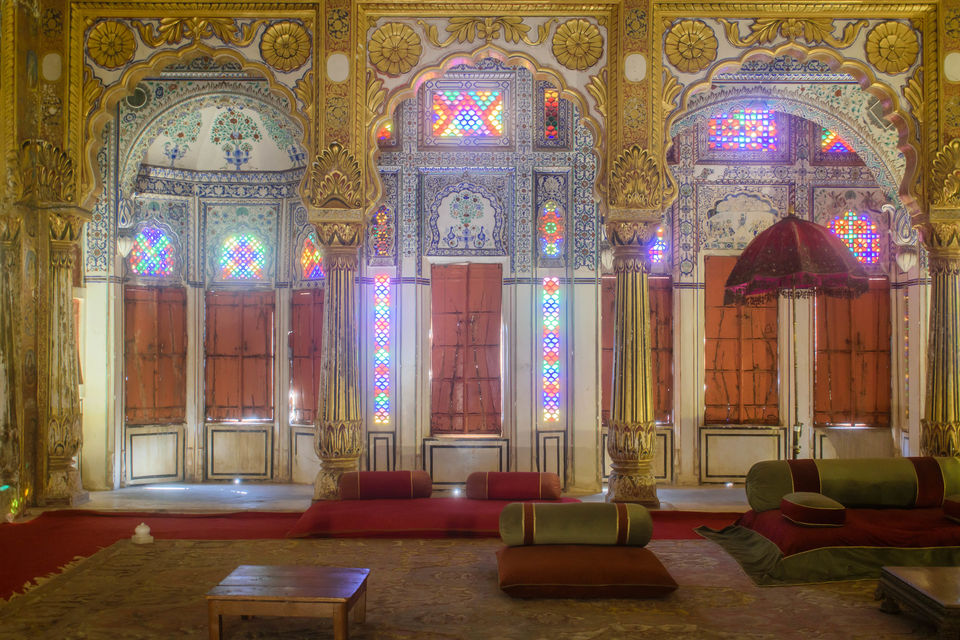
Sileh Khana (Armoury Room)


Takhat Vilas
This was the personal apartment of Maharaja Takhat Singh and is decorated from ceiling to floor with paintings on a variety of subjects; from Hindu gods and goddesses to European ladies. Even the ‘carpet’ on the floor is painted. The windows, fit with coloured glass panes tends to create a mysterious light in the room. Takhat Singh, a great patron of the arts, was the last of Jodhpur’s Maharajas to wholly reside in Mehrangarh.
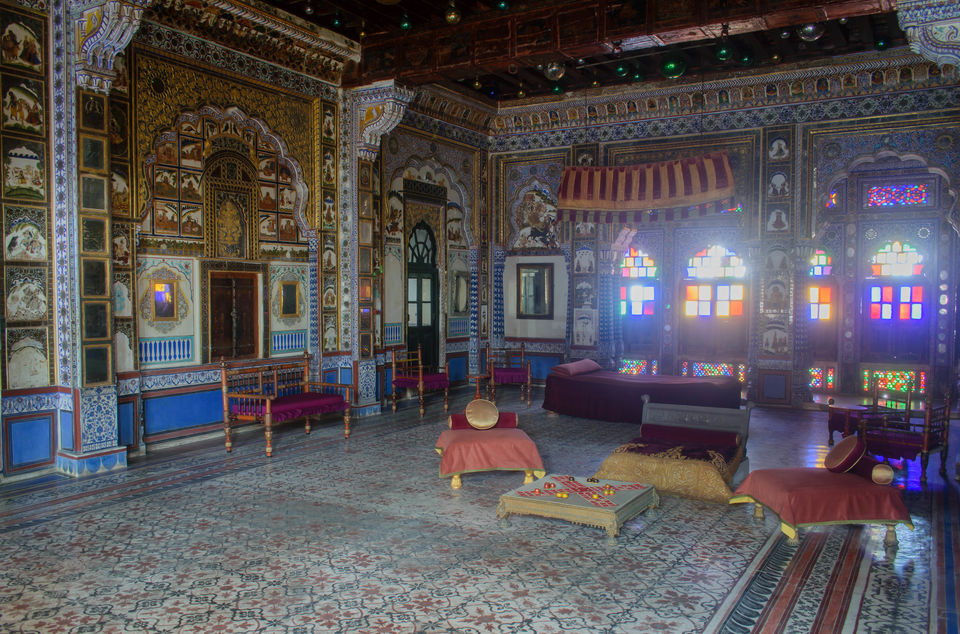
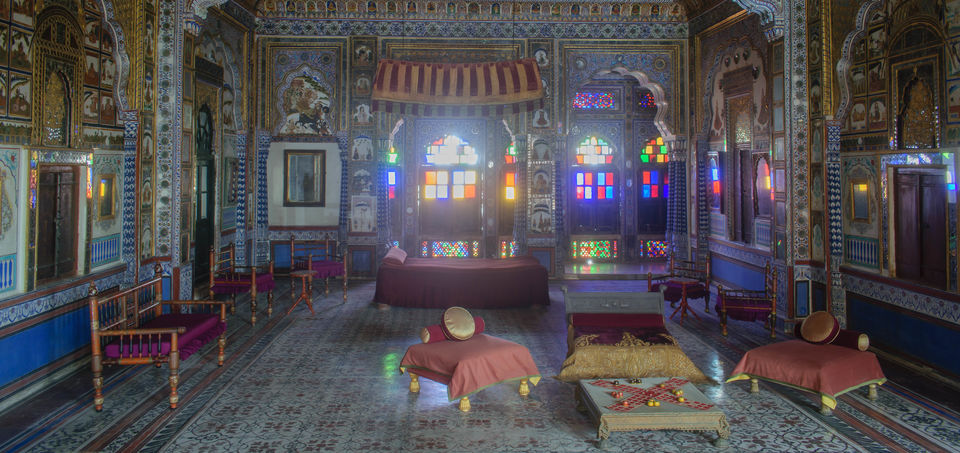
As you move beyond the Takhat Vilas, you are treated to more views of the fort and the city from a height. From here, you are taken through a couple of empty corridors towards the Jhanki Mahal.
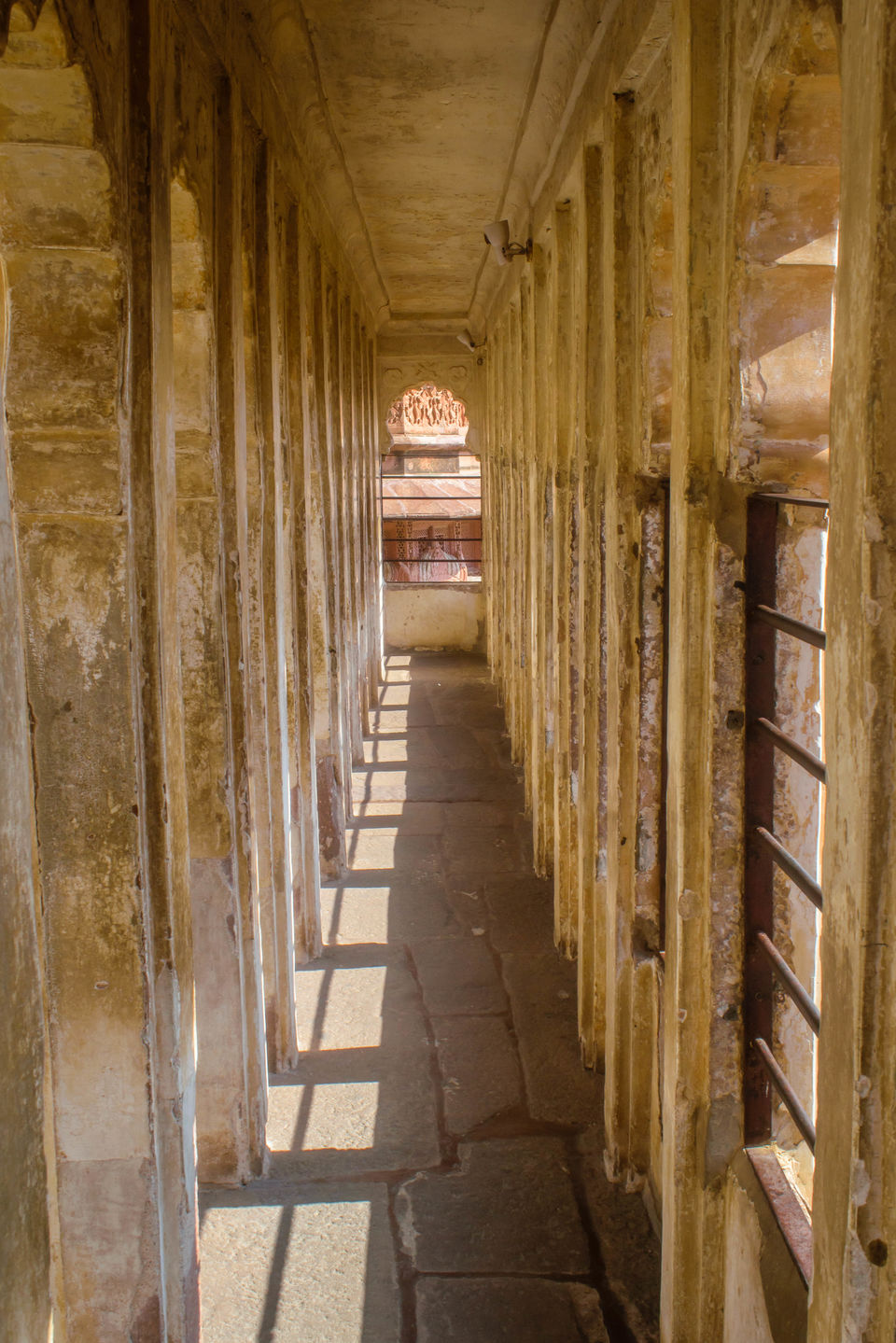
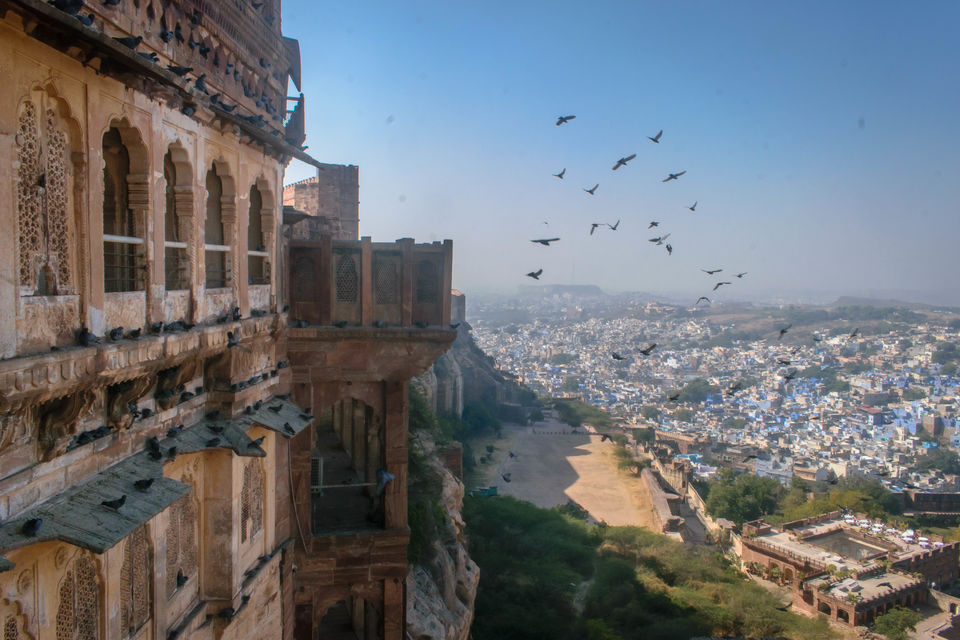
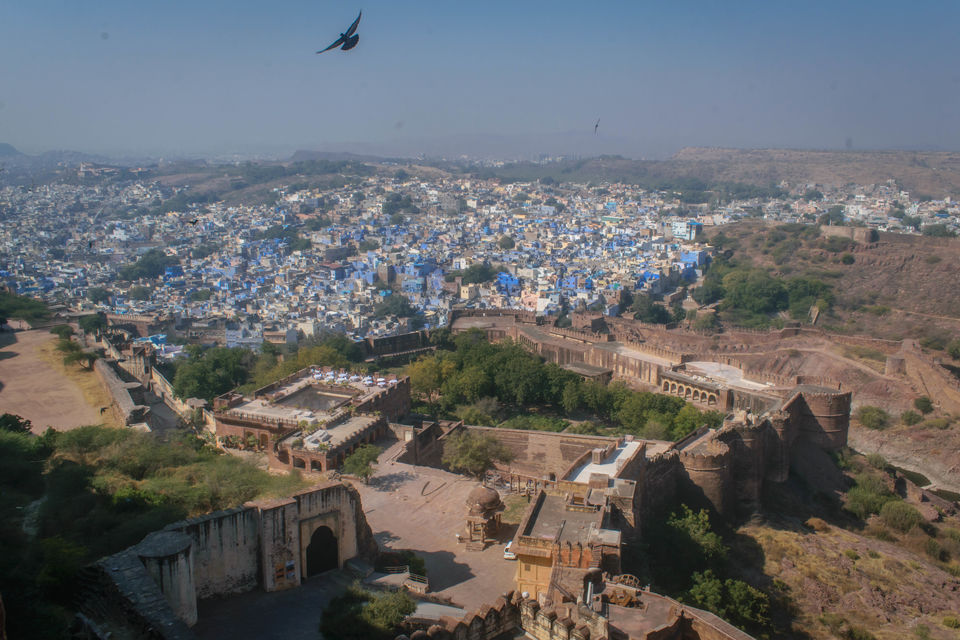

Jhanki Mahal
Jhanki Mahal (Peeping Palace) palace built during the reign of Maharaja Takhat Singh, was built to allow women to view formal proceedings in the courtyards below.
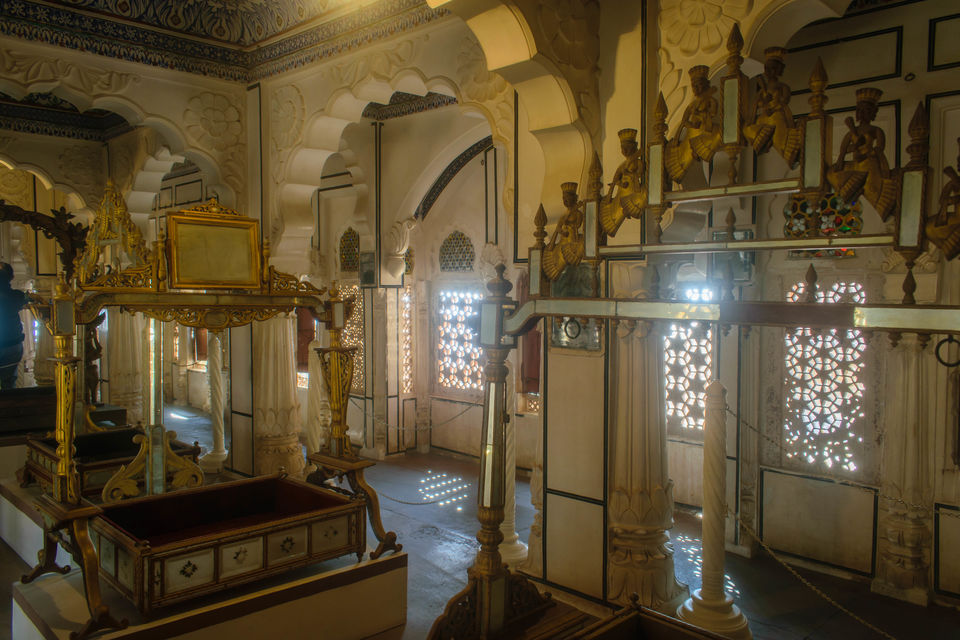
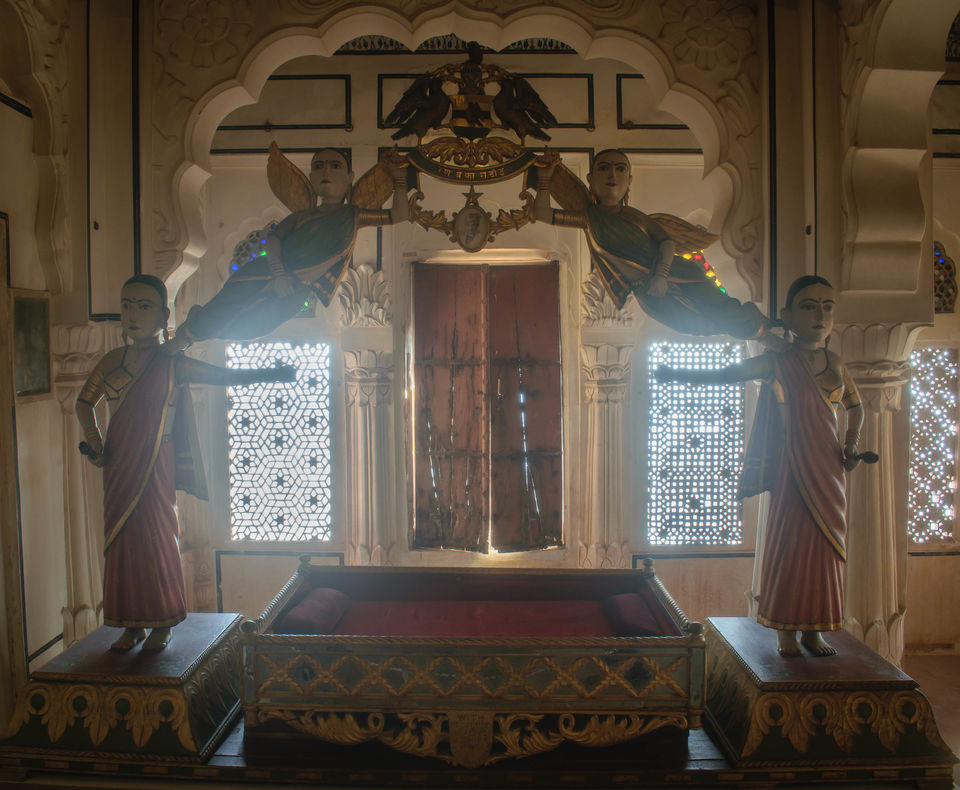
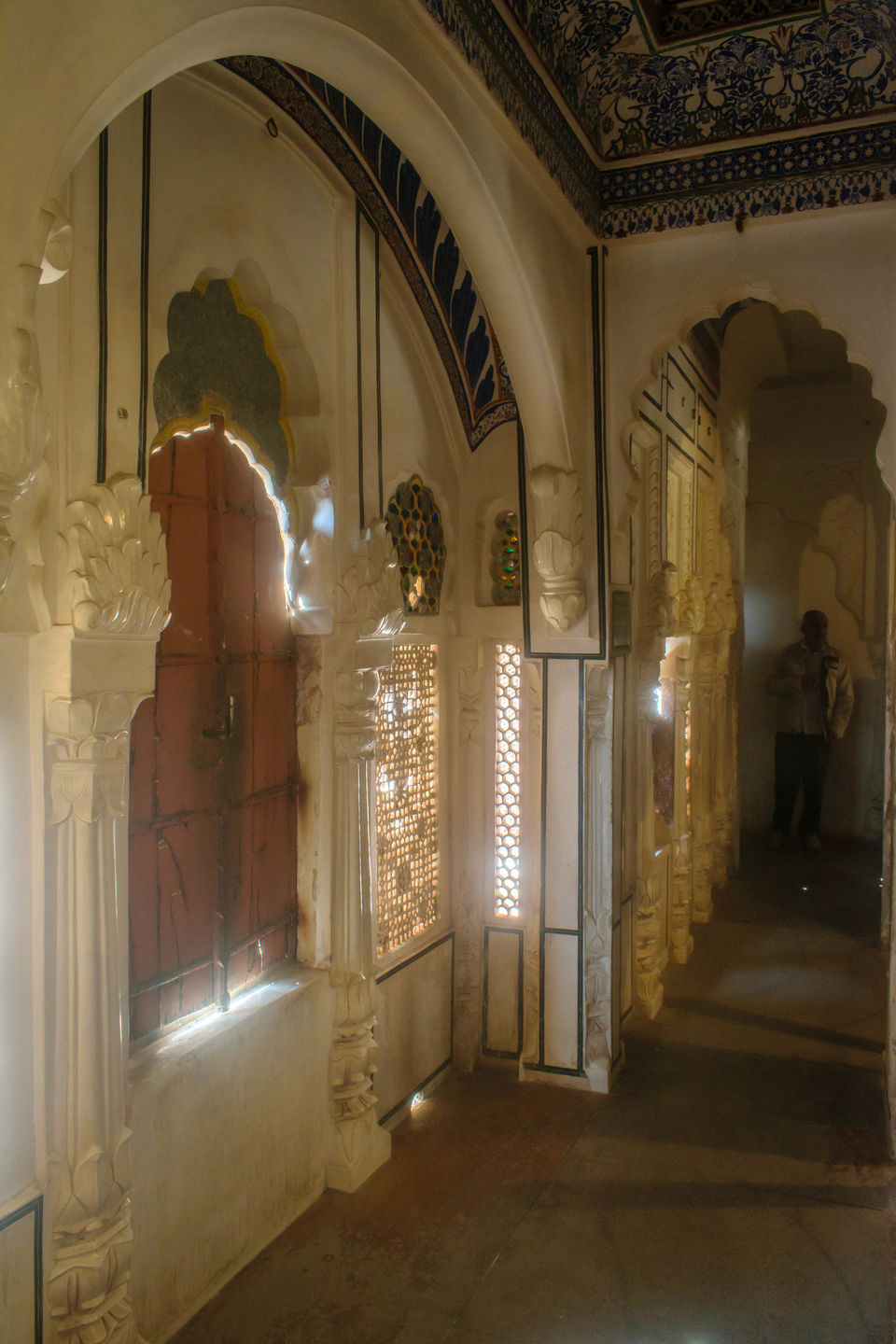
As you now slowly approach the end of the tour, you will encounter a small courtyard that houses some of the most impressive architecture. The courtyard is surrounded by the most exquisite carved lattice screens and if you observe them from a distance, appear as if having made out of laces. This is a zenana (exclusive for women) courtyard built using some beautifully chiselled yellow sandstone.
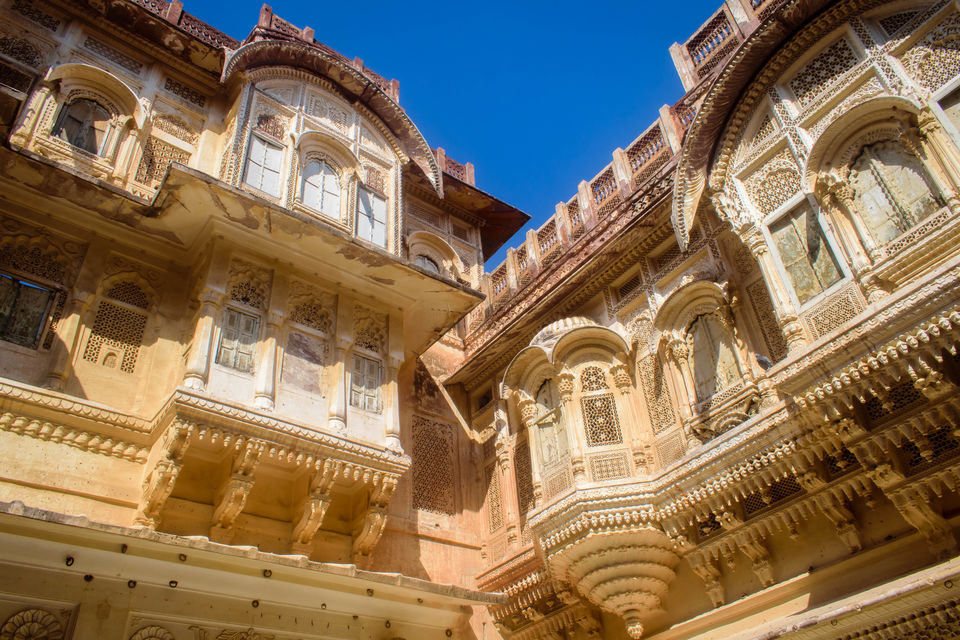
Moti Vilas
Moti Vilas (Pearl Palace) is one of the oldest rooms in the fort built in the 16th century by Sawai Raja Sur Singh as a hall for public proceedings. The walls are polished with a lime plaster called ‘chunam’ and decorated with niches while the ceiling is embellished with mirror and gilt. This gave the room a pearl-like glaze and hence the name Moti Mahal.
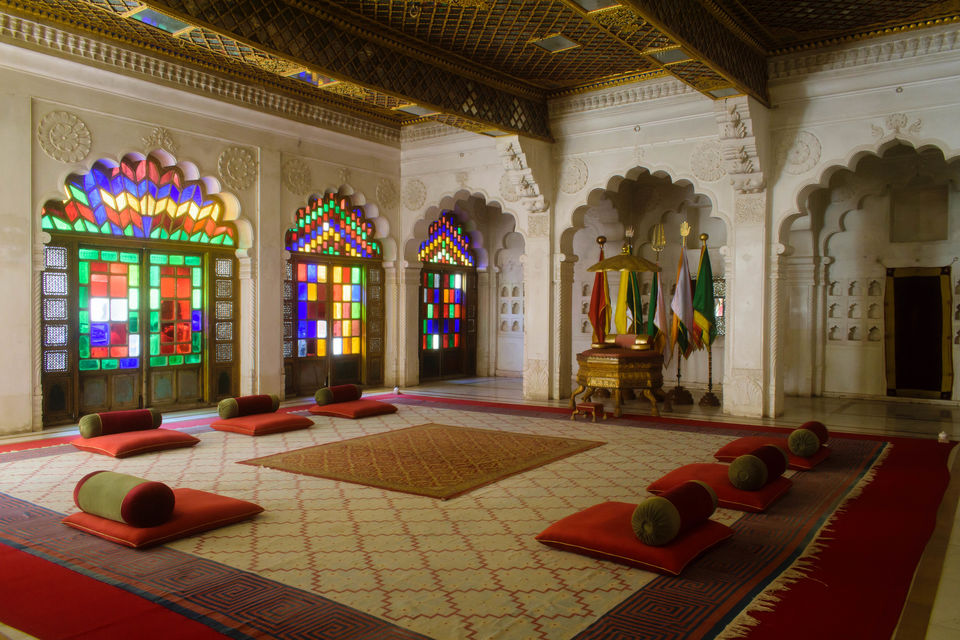
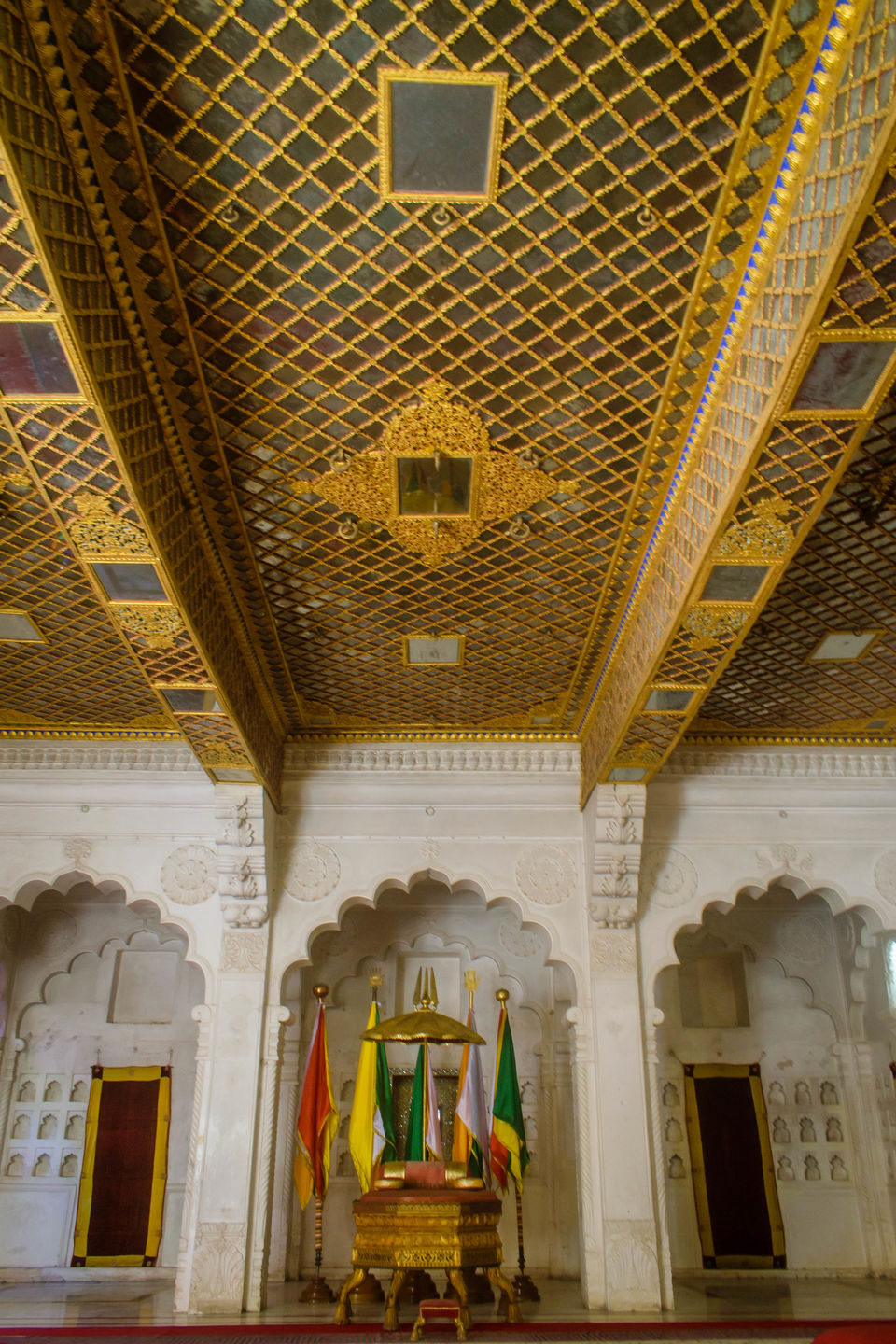
The tour finally concludes in a courtyard, with yet more wonderful architecture surrounding you. It’s a perfect spot to rest, take some photographs before heading out or go shopping. There is a museum shop at the exit for people interested in buying artefacts or souvenirs.
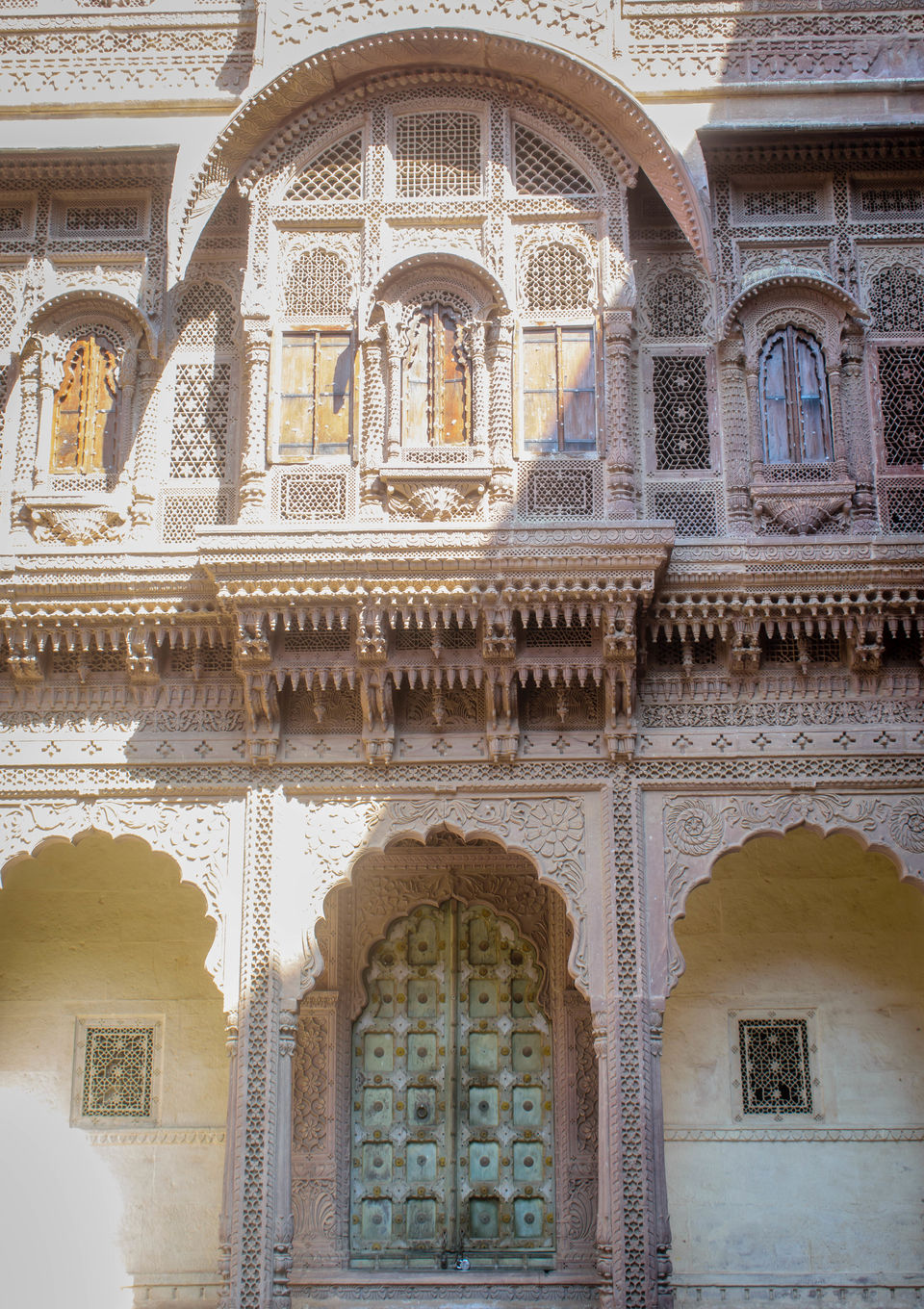

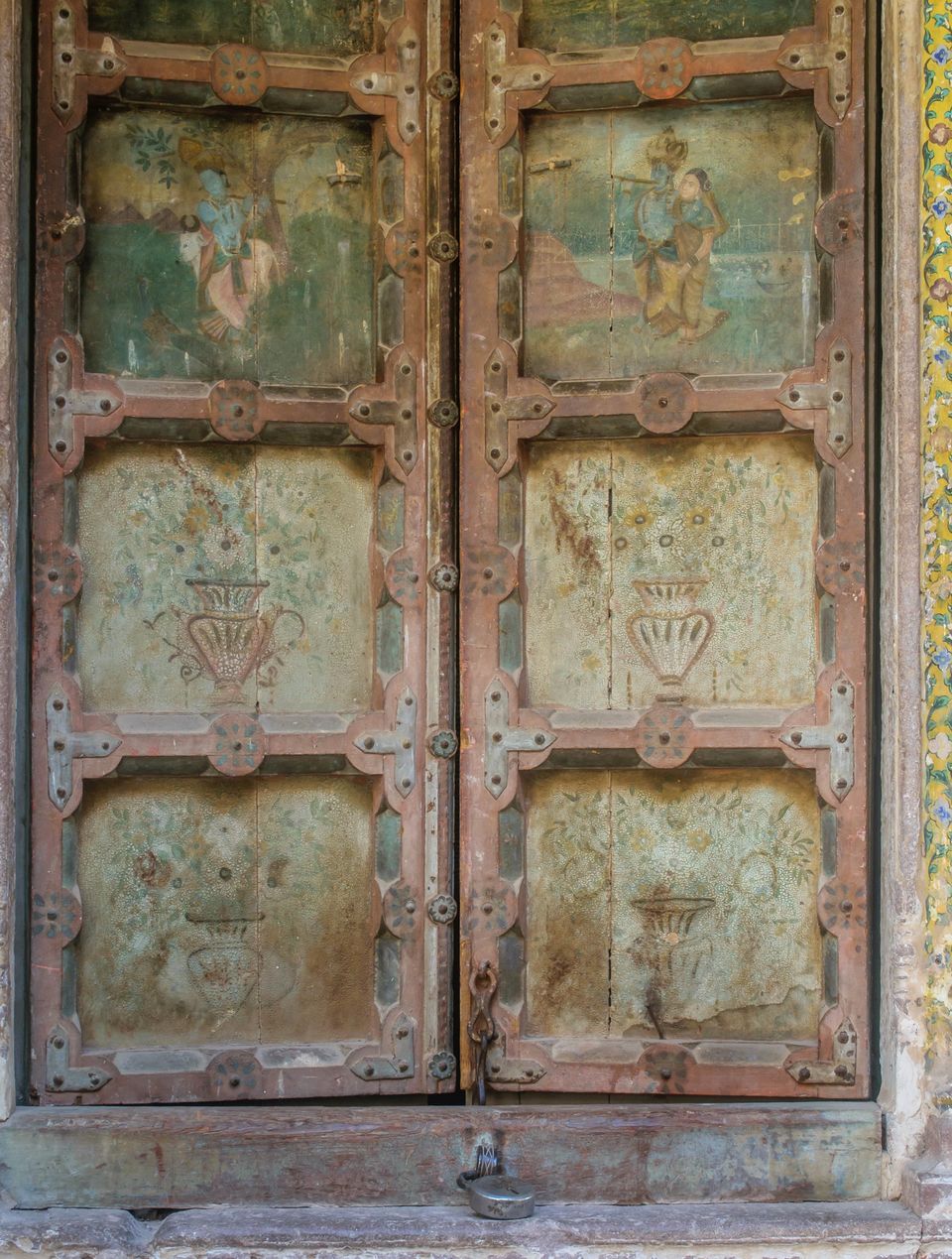
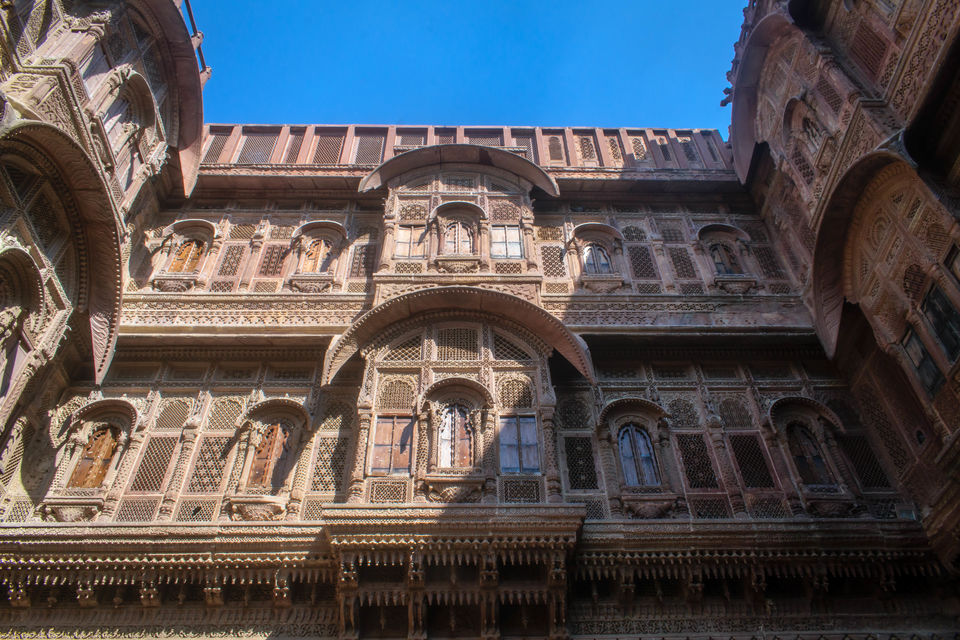
This pretty much concludes the tour of the Mehrangarh Fort. The best time to visit the fort museum is early morning, right after the fort is open to public at 9am.














